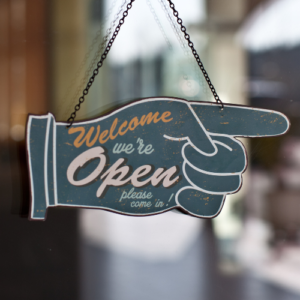Introduction

COVID-19 has fundamentally changed nearly every aspect of our lives. For many people, remote work has gone from an occasional “I need a mental health day, but still want to get a few things done” situation, to now being their regular daily routine.
Where video conferencing was a way to connect with far-flung clients or co-workers has transformed the meaning and significance of words like “Zoom” in our daily lexicon.
The changes in how we communicate, and the ways we receive and process information have also changed. The shift toward pure digital communication has hastened considerably, and because of that, it has forced marketing and advertising professionals to change their tactics as well.
When times get tough, especially for smaller businesses, the natural reaction is to stop spending. Inevitably the first thing to go is spending on marketing your business — which is the exact opposite of what you should be doing.
In what has become a global crisis, there ends up being a lot of uncertainty as to what businesses are open, and what services they are still providing. If you cease all marketing efforts, one immediate, and highly consequential assumption, is that you are not open.
In a worst-case scenario, the assumption is you are permanently closed, and if that happens, you might as well be.
Try New Marketing Strategies

The goal is to make sure that clients understand you are open for business, have a product they still want, and understand you’re doing what’s best to keep them safe and healthy.
What’s critical is that you assess your business model and determine what changes you need to make, whether it’s operationally or with the products and services you offer. There has been a rush toward what I call the “safety and security” space as a result of COVID-19. PPE, sanitation and hygiene products, Plexiglas shields and dividers for cashiers and others who deal with the public face to face, and so forth.
The problem is a lot of the businesses that have moved into this space have no actual expertise with these products. I can guarantee that, for some, it will cause long-term damage to their brand reputation. It’s important to first assess what opportunities are present that fit your business and then make a move. Once you’ve done that, you must communicate those offerings effectively.
A good case in point is a local BBQ joint that has a solid reputation for high-quality food. Like most restaurants, they pivoted as quickly as possible to curbside pickup and delivery. But, they also did some new things — like providing pellet smokers for sale that they will even deliver and set up for you.
These guys understand good BBQ, and they know that even if you buy a pellet smoker from them, you’re going to stop by and get one of their rib platters. They also made sure to market the heck out of it. It’s no good to offer a new product or service if people don’t know about it.
One final thing to consider is not just that you market, but HOW you market.
Consulting with an agency you trust will help you formulate a marketing plan that suits you and your business’s needs. Does it make sense to stay digital, advertising via Facebook or Google? Should you consider radio or Pandora advertisements? A lot of folks are at home right now, streaming music while they work, after all. Or do you leap into printed, mailed advertising? For example, if you’re a small food service establishment, it can be surprisingly affordable to hit every home within a couple of miles of your business with a coupon or updated takeout menu.
Conclusion
Remember, in these times, adaptation is vital. By strategically evolving your techniques to communicate with — and market to — your customers, you’ll be better positioned for long-term success.
If you need help with crafting your marketing strategy check out our graphic design services and then book a call with us to find out how we can help you.
